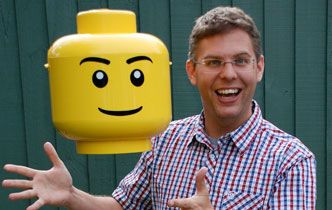Legos Study Reveals Angry Faces On Toys Could Influence Your Child's Negative Behavior

University of Canterbury researcher Dr. Christoph Bartneck, Ph.D., has just concluded a study investigating the number of happy and angry faces featured on Lego miniature figures. Findings produced by his analysis show that the number of angry faces has been on the rise in recent years while happy faces have been on the decline.
"The example of the mini-figures show that to appeal to users it is necessary to offer a wide range of emotional expressions for today's users. Instead of focusing on realistic expressions, it may be worthwhile to increase the variability of expressions. A comic style expression is sufficient to convey a full spectrum of emotions and intensities,'' Bartneck stated.
Bartneck, also director of the University's HIT Lab, inspected all 6,000 mini-figures featured on the Lego toy line. He is confident that this research shows the Lego franchise may be moving toward more "conflict-based play themes."
"The number of new faces that the LEGO company introduces every year is increasing steadily. LEGO started producing a greater variety of faces in the 1990s. Happiness and anger seem to be the most frequent emotional expressions," Bartneck explained.
"We considered the distribution of faces across emotional categories in the context of the LEGO themes. Most mini-figures are released in sets that belong to a certain theme, such as Pirates or Harry Potter."
Bartneck did, however, commend Lego for not adopting military-based weaponry as features of their toy line. Similar toy companies, like Mega Bloks and Brickarms, have begun to add combat-inspired features to their products.
"So far LEGO has at least not produced classical military themes. The Megablocks company, on the other hand, is producing LEGO compatible construction toys that do fill this market space," Bartneck added.
"Their HALO line of products, which is directly related to the popular computer game of the same name, is clearly embedded in a military culture. Other companies, such as Brickarms, are also already offering LEGO compatible weapons for mini-figures."
Moving forward, Bartneck suggests Lego consider the impact that angry or sad faces could have on a child's perception. "It is important to study how to create appropriate expressions and how these expressions are perceived by the users. Children's toys and how they are perceived can have a significant impact on children,'' he said.
"We cannot help but wonder how the move from only positive faces to an increasing number of negative faces impacts ON how children play."
Published by Medicaldaily.com



























